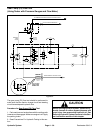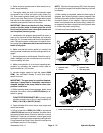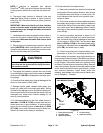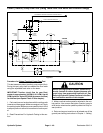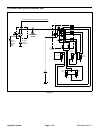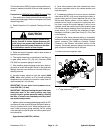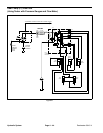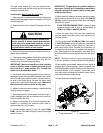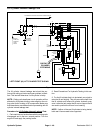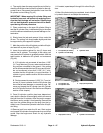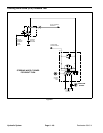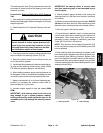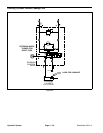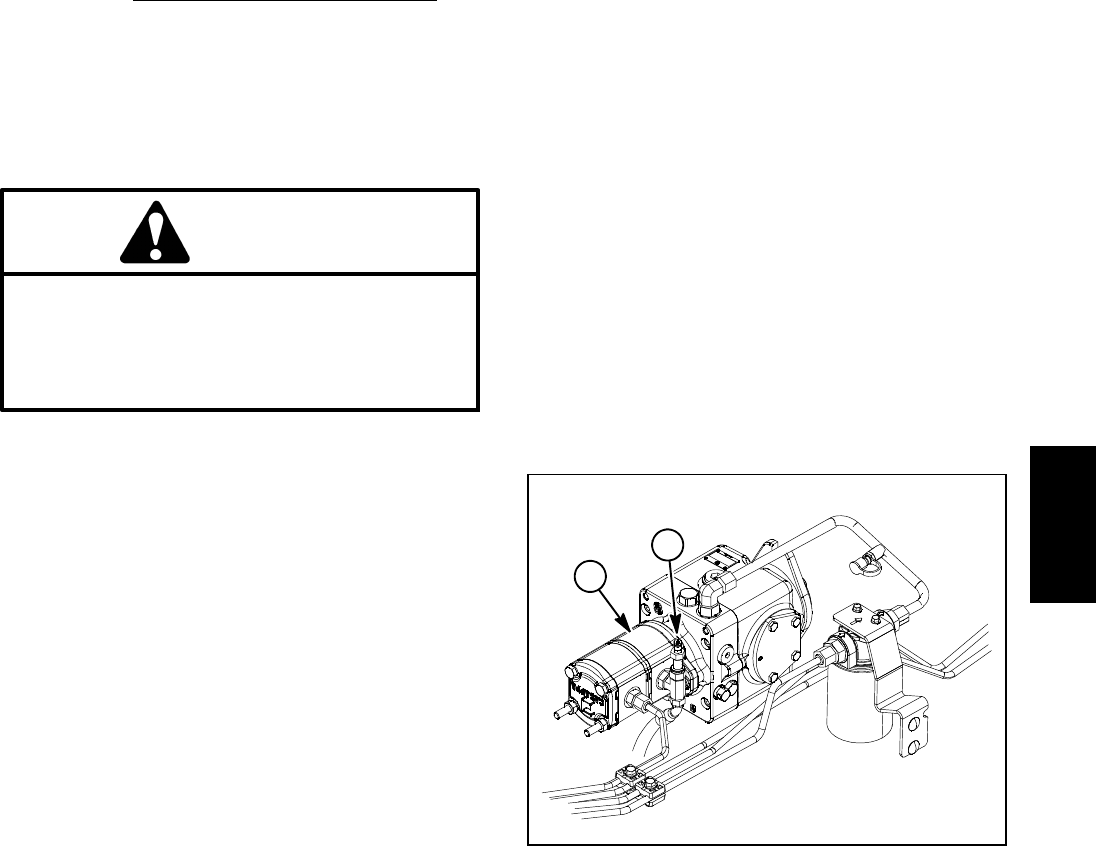
Reelmaster 5010- H Hydraulic SystemPage 4 - 43
The lift relief valve (SVRV) pressure test should be per-
formed to make sure that the lift circuit relief pressure is
correct.
Procedurefor Lift Relief Valve (SVRV)Pressure
Test
1. Parkmachineonalevelsurfacewiththecuttingunits
loweredand disengaged.Make sureengine isoff.Apply
the parking brake.
2. Read Precautions For Hydraulic Testing in this sec-
tion.
CAUTION
Before opening hydraulic system, operate all hy-
draulic controls to relieve system pressure and
avoid injury from pressurized hydraulic oil. See
Relieving HydraulicSystem Pressurein the Gen-
eral Information section of this chapter.
3. Raise and support operator seat to allow access to
hydraulic pump assembly.
4. Thoroughly clean test port attached to tee fitting on
1
st
gear pump section (P1) (Fig. 40). Connect a 5000
PSI (350 bar) pressure gauge to test port.
5. After installing pressure gauge to test port, start en-
gine and run at low idle speed. Check for any hydraulic
leakage from test connections and correct before pro-
ceeding with test.
6. Increase engine speed to high idle speed (3000
RPM). Make sure hydraulic oil is at normal operating
temperature by operating the machine under load for
approximately ten (10) minutes.
IMPORTANT: Do not allow circuit pressure to ex-
ceed 2500 PSI (172 bar).
IMPORTANT: While performing this test, hold lower
mow/raise lever in the raise position only long
enough to get a system pressure reading. Holding
the lever in raise for an extended period may dam-
age system components.
7. Make surethatreel engage/disengageswitch isOFF
and then pull lower mow/raise lever rearward (raise po-
sition) to pressurize lift circuit. While holding lever rear-
ward, watch pressure gauge carefully. As the cutting
units raise fully and the lift relief valve lifts, system pres-
sure should be:
Approximately 2000 PSI (138 bar)
8. Once relief pressure has been determined, return
the lower mow/raise lever to the neutral position and
stop the engine.
9. If measured pressure is incorrect, remove solenoid
relief valve (SVRV) in lift control manifold and clean or
replace valve (see Lift Control Manifold Service in the
Service and Repairs section of this chapter). Also, if
pressure is low, check for restriction in gear pump suc-
tion hose. Internal lift cylinder leakage in one or more
cylinders would also cause low lift circuit pressure (see
Lift Cylinder Internal Leakage Test in this section). Gear
pump section (P1) could also be suspected of wear,
damage or inefficiency (see Gear Pump (P1) Flow Test
in this section).
10.After lift relief valve pressure testing is completed,
make surethat engine is stopped, thenrelieve hydraulic
system pressure (See Relieving Hydraulic System
Pressure in the G eneral Information section of this
chapter). Disconnect pressure gauge from test port at
gear pump and install dust cap to test port.
11.Lower and secure operator seat.
1. 1
st
gear pump section 2. Test port
Figure 40
2
1
Hydraulic
System




